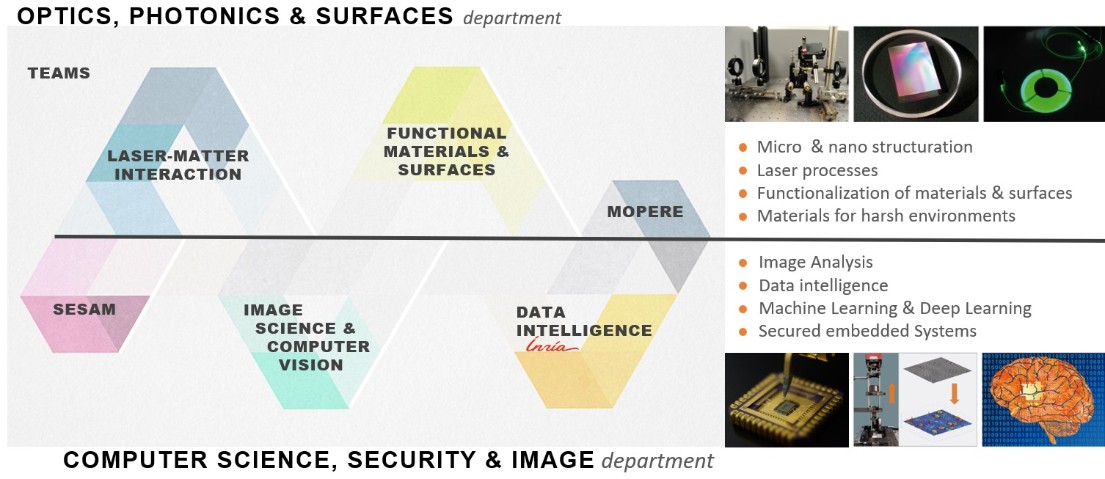Presentation
The Hubert Curien Laboratory is a joint research unit of the University Jean Monnet Saint‑Etienne and CNRS, with the Institut d’Optique Graduate School as secondary institutional sponsor.
The laboratory has built an exceptional environment around a Training / Research / Innovation articulation, an integrated approach that fosters synergy between fundamental research, the training of future experts, and the valorisation of scientific discoveries.
With an annual average of 230 international publications, the Hubert Curien Laboratory is a highly recognised and productive research institution. In the last 5-year period, it has participated in 18 European projects, including 3 EIC and 47 ANR contracts, with approximately 50% led in coordination. It has also contributed to 5 FUI and 3 iDemo projects, further strengthening its commitment to innovation and technology transfer. Its involvement in 3 LabEx (Manutech-SISE, PRIMES, MiLyon) and 5 PEPR programs (Cybersecurity, Quantum Technologies, Electronics, Origins, LUMA) strengthens this dynamic by driving collaborative and interdisciplinary research. The laboratory also provides 4 experimental platforms open to external industrial and academic users, facilitating the sharing of resources.
The laboratory plays a key role in education by coordinating 9 master's programs – including 7 international - led by several of its researchers. It also coordinates the EUR Manutech-SLEIGHT, a Graduate School dedicated to training master and doctoral students through and for research in the domains of Surfaces Light EngIneerinG Health and socieTy (SLEIGHT).
The laboratory has established strong partnerships with the industry, particularly through the creation of 4 joint laboratories with private partners (Exail, HID, HEF, Orano). These collaborations drive technology transfer and foster innovative solutions.
The laboratory's achievements reflect its dynamism and impact. During the last 5-year period, 32 patents were granted, including international term extensions, demonstrating the global significance of its innovations. Four startups have emerged from or are affiliated with the laboratory, reinforcing its role in fostering technological entrepreneurship.
Key dates:
Departments, teams and activities:


